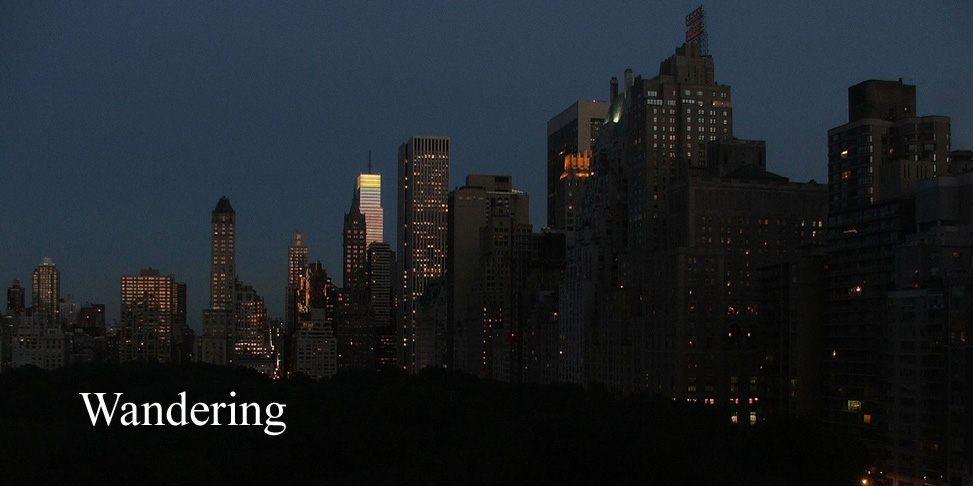Making Music: Christopher Rouse, a concert in Zankel Hall gave me the opportunity to learn something of a major American composer and his work. Christopher Rouse ( b. 1949 ) is best known for his orchestral works, which I have not heard. I began with the four chamber works on this program which included a commentary by the composer taking the form of interviews with Jeremy Geffen, director of artistic planning at Carnegie Hall. Many of his orchestral works are on CD, including some recordings by Alan Gilbert and Stockholm Philharmonic Orchestra
First was a short work for percussion, Ku-Ka-Ilimoku (1978 ) “scored for four percussionists on a vast array of instruments”. It is inspired by Hawaiian music and legend: Ku is a Hawaiian god. Mr. Rouse said it was a reaction to the “swish – ping” school of percussion writing which prevailed at the time its writing. He said that, for him, the whole purpose of percussion was to beat the heck out of it; and this he proceeded to do. I know little of percussion music of either school, but I can say that this piece had a great deal of rhythmic drive and that it was very loud.
The next piece was more complex but also contained a good deal of loud percussion. Rotae Passionis (1982). It is intented to present a view of the crucifixion in harmony that of with Northern Renaissance painters like Hieronymus Bosch. Its music is also in the German tradition, as it was written as a tribute to Carl Orff, who died during its compostion. Mr. Rouse admires Orff’s music and based this piece upon the “Wheel of Fate” from Carmina Burana. It begins with a motive quoted from Orff.
It is scored for Flute, Clarinet, Violin, Viola, Cello, Percussion (2) and Piano; though this doesn’t give an accurate idea of the sound as the instruments often play alone and the piano is introduced late. The first passage, Circular Lament – The Agony in the Garden, is followed by representations of the 14 Stations of the Cross. The players are directed that each of these 14 sections have a duration of precisely 20 seconds. Each section is separated from the next by a mighty blow from a Mahler hammer. The final section Parallel Wheel –Christ Asleep had a more lyrical tone. I am unfamiliar with the religious and musical traditions which inform this piece, and I found it abrasive and, again, very loud in parts. I hoped that the passages for string trio towards the end of the piece were an indication of what was to come in the second half, and it proved to be so.
Not all of it was loud however and softer passages were disturbed by the by the subway noise which is an unfortuanate feature of Zankel Hall. The Hall opened in 2003. It is a very attractive modern Hall which lies beneath Carnegie Hall itself and virtually in the subway. The noise is not trivial, I rate it at plus 10 on the Verbruggen scale of concert hall railway intrusion. It is remarkable that the Hall came to be built in this location without adequate insulation.
After the intermission, the Calder String Quartet played Mr. Rouse’s String Quartet No. 3 (2009). This was his first chamber work since Compline, the work following on this program, and only the second since his second string quartet composed in 1988. It was first performed in New Haven last June by the Calder Quartet.
The quartet was intended to be difficult to play. It the parts are written in rhythmic but not melodic unison. I imagine that, as a listener, I would hear rhythmic unison in percussive instruments, but here, even with the knowledge that the quartet was playing in unison, I didn’t hear the music as such.
In his discussion of this piece, Mr. Rouse mentioned an aspect of composition that had never occurred to me. The complexity of this quartet required the Calder Quartet, which was familiar with his music, having played his first and second quartets, to work for about 200 hours to learn it. Orchestras do not have 200 hours or anything like it in which to rehearse new music so, if a composer wants his music played at all by an orchestra, it has to be written so that an orchestra can play it after two or three rehearsals. (This does not mean that the music must be easy). I guess this must be correct; and it might be worth investigating whether say, Beethoven’s quartets are more difficult in this sense than his symphonies.
The quartet itself presented the usual problems of trying to get some understanding of music on a first hearing. Although I didn’t hear it as rhythmic unison, my overall impression was of a work of great tension and intensity. There is a lot of sliding about with glissandi adding to the prevailing air of anxiety.
The final work in the program was Compline (1996), which was commissioned to be played with and by the same ensemble as Ravel’s Introduction and allegro for flute, clarinet, harp and string quartet.
Compline has a kind of program: Mr. Rouse explained that it relates to a trip he made to Rome, in which the busy activity of sightseeing was replaced by the spiritual atmosphere invoked by visits to the various Roman churches. I found it to be the most accessable work on the program and will seek it out again. There is a recording of it which also includes the first and second string quartets.
Making Music: Christopher Rouse; Zankel Hall 15 April 2011.
Making Music: Christopher Rouse; Zankel Hall 15 April 2011.






No comments:
Post a Comment